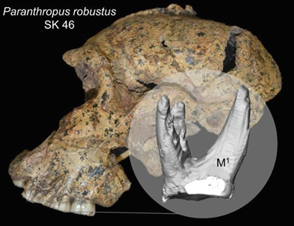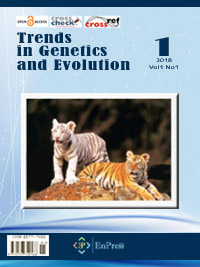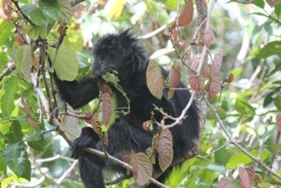|
2578-1707 (Online) Journal Abbreviation: Trends Geneti. Evolu. |
Trends in Genetics and Evolution (TGE) is an open access double-blind peer-reviewed online journal. TGE is devoted to studying the origin, evolution, gene and genome structure, function, evolution, and regular pattern of organisms. It involves various biological fields, such as viruses, microorganisms, animals, and plants, covering the cellular basis of molecular genetic material, the genetic pattern of genetic material, the molecular basis of genetic material, biological variation and evolution, etc. It includes interdisciplinary research, such as cell engineering, genetic engineering, bioinformatics, molecular genetics, molecular biology, epigenetics, medical genetics, quantitative genetics, population genetics, cytogenetics, functional genomics, etc. |
Online Submissions
Registration and login are required to submit items online and to check the status of current submissions.
Already have a Username/Password for Trends in Genetics and Evolution?
GO TO LOGIN
Need a Username/Password?
GO TO REGISTRATION
Submission Preparation Checklist
As part of the submission process, authors are required to check off their submission's compliance with all of the following items, and submissions may be returned to authors that do not adhere to these guidelines.
- The submission has not been previously published, nor is it before another journal for consideration (or an explanation has been provided in Comments to the Editor).
- The submission file is in Microsoft Word format.
- Where available, URLs for the references have been provided.
- The text adheres to the stylistic and bibliographic requirements outlined in the Author Guidelines, which is found in About the Journal.
- If submitting to a peer-reviewed section of the journal, the instructions in Ensuring a Blind Review have been followed.
Privacy Statement
The names and email addresses entered in this journal site will be used exclusively for the stated purposes of this journal and will not be made available for any other purpose or to any other party.
Article Processing Charges (APCs)
Trends in Genetics and Evolution is an Open Access Journal under EnPress Publisher. All articles published in Trends in Genetics and Evolution are accessible electronically from the journal website without commencing any kind of payment. In order to ensure contents are freely available and maintain publishing quality, Article Process Charges (APCs) are applicable to all authors who wish to submit their articles to the journal to cover the cost incurred in processing the manuscripts. Such cost will cover the peer-review, copyediting, typesetting, publishing, content depositing and archiving processes. Those charges are applicable only to authors who have their manuscript successfully accepted after peer-review.
| Journal Title | APCs |
|---|---|
| Trends in Genetics and Evolution | $800 |
We encourage authors to publish their papers with us and don’t wish the cost of article processing fees to be a barrier especially to authors from the low and lower middle income countries/regions. A range of discounts or waivers are offered to authors who are unable to pay our publication processing fees. Authors can write in to apply for a waiver and requests will be considered on a case-by-case basis.
APC Payment
Payments for APC of this journal can be made through our online PayPal payment gateway. Enter the article no. into the below textbox and select "Pay Now" to proceed with payment.
*Article No. is mandatory for payment and it can be found on the acceptance letter issued by the Editorial Office. Payment without indicating Article No. will result in processing problem and delay in article processing. Please note that payments will be processed in USD. You can make payment through Masters, Visa or UnionPay card.
Vol 6, No 1 (2023)
Table of Contents
Mackerel is a small pelagic fish that has potential value and can be found throughout Indonesian waters. It is feared that high exploration activities will have an impact on the population. Sampling was carried out at the fish landing port and fish auction place (Bacan, Morotai and Ternate). The sample was photographed and the 3 cm swimming fin was taken. The sample is then stored in a tube that has been filled with 96% ethanol solution. The next stage is the process of extraction, amplification, electrophoresis and DNA sequencing. Phylogenetic reconstruction of comparison of primary data (Bacan, Morotai and Ternate) and secondary data (Indian) clarified to form two different populations (clades). Amova population pairwaise (Fst) showed the genetic flow of R. kanagurta population in the waters of the north Maluku Sea (Bacan, Morotai and Ternate). On the other hand, genetic distance shows that populations (Bacan, Morotai and Ternate) were closely related and have strong genetic connectivity.
The study aims to design and evaluate alternative village-based breeding plans for Afar goats in Aba’ala, Afar region, Ethiopia. The alternative breeding plans were designed and evaluated using ZPLAN+ computer program following the gene flow method and selection index procedures. Input parameters were sourced from a production system survey study, own-flock ranking exercises and literature. The breeding goal traits included six-month weight, daily milk yield and proportions of weaned kids. Four alternatives were designed based on the variation of the number of the traits in the selection index (recording) while keeping all traits in the aggregate breeding goal. Furthermore, the proposed alternative plans were evaluated by varying the years of breeding buck service period. Higher annual genetic gain was estimated for six-month weight (0.2983 kg) in alternative 4, for daily milk yield (0.0083 kg or 8.3 g) and proportion of lambs weaned (0.0142%) in alternative 1 when the years of buck use for breeding was set to two years. Higher selection accuracy was obtained in alternative 1 when all the traits were included in the selection index while lower selection accuracy was achieved in alternative 4 when six-month weight only was included in the selection index. The highest profit per doe per year was achieved in alternative 1 (1.221€) while the lowest was obtained in alternative 4 (0.885 €) when six-month weight only is included in the selection index. The simulation results gave an acceptable range of genetic gains with little difference across the alternatives. Therefore, village breeding programs with a few traits in the recording and two years of breeding buck use are deemed practicable. The proposed breeding plans should be part of the national development strategies and involvement of local research institutions and universities is very crucial to ensure adequate technical support.
In some fungi-ascomycetes and basidiomycetes, the 4 haploid spores formed as a result of meiosis can fuse in pairs, forming a dikaryon or diploid. The consequence of such intratetrad mating is the preservation of heterozygosity of genes linked to the mating-type (MAT) locus. If the MAT is linked to the centromere physically or genetically (as a result of the suppression of recombination), the centromere regions of all chromosomes are preserved in a heterozygous state. Suppression of recombination in the MAT chromosome contributes to the accumulation of lethal mutations and chromosomal rearrangements in it. Two MAT chromosomes cease to be homologous and become analogues of the sex chromosomes of animals and plants.
Nowadays, it seems like human beings are worried about how the world will meet its food security demand urgently when they have faced on rapidly increasing population and combat climate change. Scientists and researchers are indispensably investigating to enhance food sources such developing novel cops with high yield and good quality and even coping with the adverse environment in terms of biotic and abiotic stresses. Thus, there is one valuable method it is believed that should be developed further. In fact, it is believed that human beings should continue using it as soon as possible because it can provide the world with a source of food. Polyploidization introduced by plant growth regulator induction is a good method because it is safety and easy to develop new crops with potential agronomic traits, these polyploidy plants are rare aneuploid and it contains intriguing characteristics of polyploidy plants in adapting to ecological variability. This review sheds light on 1) summarizing molecular mechanism of plant growth regulator induction for plant ploidy manipulation; 2) achieving of polyploidization through plant growth regulator induction; 3) enumerating the perspectives of polyploidization in crop development to cope with climate change. Although the role of phytohormones is underestimated, the effectiveness on physiological level of plants to make polyploidy plants is worth considering and the effects and bio-safety of that on human are also concerned.
In 1989, Stephen Jay Gould published his Wonderful Life: “High in the Canadian Rockies is a small limestone quarry formed 530 million years ago called the Burgess Shale. It holds the remains of an ancient sea where dozens of strange creatures lived a forgotten corner of evolution preserved in awesome detail. In this book Stephen Jay Gould explores what the Burgess Shale tells us about evolution and the nature of history”. Gould, based upon a reinterpretation of the famous fossils from the Burgess Shale, proposed a conclusion that was revolutionary at the time, because it was centred on the notion of contingency in the course of biological evolution. The very last paragraph displayed in particular the following sentences: “This response does not cite a single law of nature; it embodies no statement about predictable evolutionary pathways, no calculation of probabilities based on general rules of anatomy or ecology. I do not think that any ‘higher’ answer can be given, and I cannot imagine that any resolution could be more fascinating.” In this essay, I intend to criticise Gould’s conclusions and to provide a new reinterpretation of the history of life, based not on contingency but on the inevitability of evolution.
Announcements
Research News: Section Collection Project Welcome Submissions |
|
The SE project promoted by the journal is waiting for you who shine brightly in every Section. |
|
| Posted: 2023-08-07 | More... |
Research News: Why leaf-eating Asian monkeys do not have a sweet tooth |
|
Asian colobine monkeys are unable to taste natural sugars, and in fact have a generally poor sense of taste. This is according to research led by Emiko Nishi of the Primate Research Institute of Kyoto University in Japan. Nishi and her colleagues found that the receptors on the tongues of colobine monkeys do not function in the same way as for fruit-eating monkeys, who are sensitive to sweet tastes. The study is published in the Springer Nature branded journal Primates, which is the official journal of the Japan Monkey Centre.
This is a monkey feeding. Credit: Copyright Yamato Tsuji |
|
| Posted: 2018-09-12 | More... |
Research News: Getting to the roots of our ancient cousins' diet |
|
 Paranthropus robustus fossil from South Africa SK 46 (discovered 1936, estimated age 1.9-1.5 million years) and the virtually reconstructed first upper molar used in the analyses. Credit: Kornelius Kupczik, Max Planck Institute for Evolutionary Anthropology |
|
| Posted: 2018-09-12 | More... |
| More Announcements... |


 ISSN:
ISSN: Open Access
Open Access

